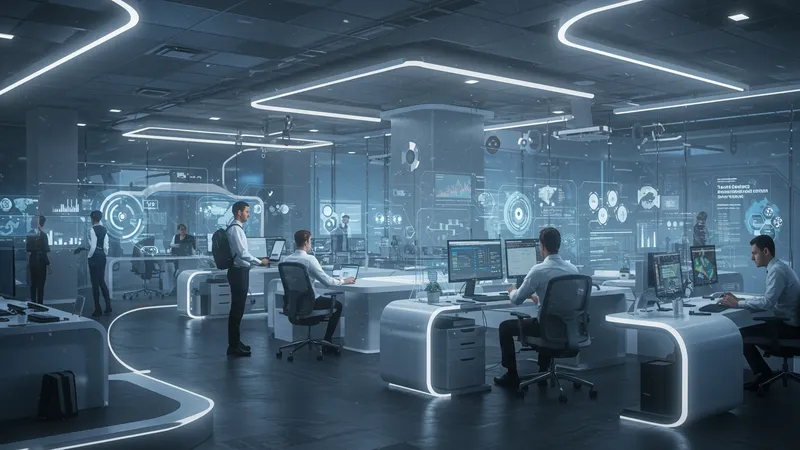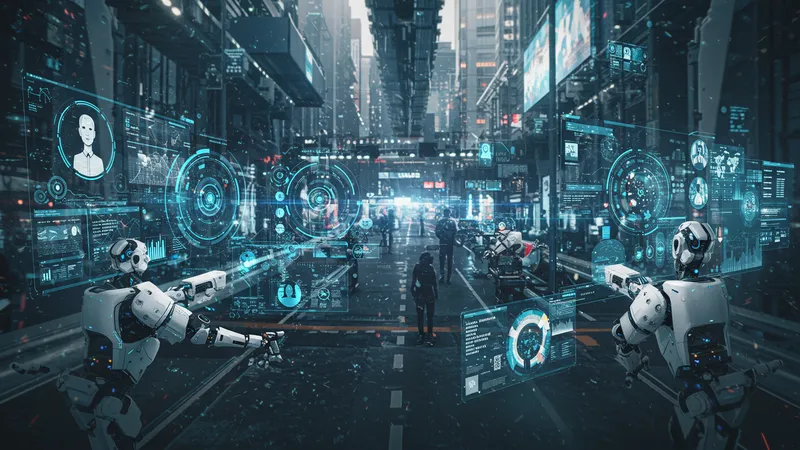

The concept of smarter automation in 2025 centers on systems and technologies that go far beyond traditional, rule-based automation. Instead of simply performing repetitive tasks, next-generation automation solutions integrate artificial intelligence and advanced analytics to adapt, learn, and make decisions with growing sophistication. Automation is shifting from basic process improvements to genuinely transformative workflows, where software and machines anticipate needs and deliver smarter results across industries.
This shift is driven by the convergence of AI, robotics, improved data processing speeds, and flexible cloud infrastructure. In 2025, the landscape is expected to change rapidly as automation becomes smarter, more collaborative, and accessible to organizations of all sizes. Domains that once relied solely on human expertise, such as customer service, manufacturing optimization, and workflow orchestration, will see AI-driven automation become a strategic differentiator.

One major benefit of smarter automation in 2025 is the ability to seamlessly handle unstructured data, such as emails, images, and audio, enabling decision-making that approaches human-level reasoning. Systems like UiPath now harness natural language processing and deep learning to automate tasks once considered too complex for machines, ranging from invoice validation to customer query resolution.
Scalability is another defining advantage. With cloud-based platforms like ServiceNow Automation Engine, organizations can rapidly deploy and update automation bots across departments without cumbersome infrastructure investments. This scalability democratizes access, so even midsize firms can leverage capabilities once reserved for global giants.
Smarter automation also impacts physical domains, as seen with Tesla Autopilot’s continuous software updates enabling safer, more efficient driving. Vehicles process sensor data in real-time, adapting to conditions and learning from fleet-wide experiences, which demonstrates how AI and automation are fusing to optimize safety and performance in the real world.
Finally, the economic impact is significant. Smarter automation isn’t just about cutting costs; it enables businesses to redeploy human talent to higher-value tasks, foster innovation, and deliver richer customer experiences. As automation platforms grow more intelligent, organizations can redesign workflows with enhanced resilience, responsiveness, and agility.
These examples represent the front lines of the smarter automation revolution. As we move into 2025, the potential to reshape industries and redefine work itself grows even greater. The deeper details reveal even more valuable insights ahead, exploring how smarter automation is redefining productivity, decision-making, and human collaboration.
The technical foundation of smarter automation in 2025 is built on rapidly advancing AI models, machine learning, and real-time data integration. Platforms such as UiPath and ServiceNow are embedding contextual decision-making into workflows, empowering bots with the ability to analyze documents, process language, and interact intelligently with users. These platforms leverage cloud computing to ensure automation can scale at a rate that’s nearly impossible with on-premise solutions, setting a new standard for operational efficiency.

Machine vision and deep learning, as used in Tesla’s Autopilot, represent a leap for automation outside digital spaces. Vehicles equipped with sensors and neural networks process millions of miles of real-world driving input. This data isn’t just passively collected—it’s used actively to teach every vehicle in the fleet, resulting in a feedback loop that continuously improves safety features with each software update and route traveled.
Integration is a key trend. Platforms like ServiceNow Automation Engine are designed to connect with existing enterprise software—HR, CRM, ITSM, and more—enabling businesses to introduce automation without ripping out legacy infrastructure. These integrations mean that automation strategies are no longer standalone projects but core elements of competitive digital transformation efforts.
Security and compliance are also major focus points. Smarter automation platforms are introducing advanced identity and access controls, audit trails, and compliance checks as standard features. Companies can trust that their AI-driven processes are not only efficient but also secure and auditable, meeting regulatory demands in finance, healthcare, and beyond. More on how these features influence adoption will be explored next.
The organizational benefit of smarter automation in 2025 is reflected in newfound agility and improved resource allocation. By delegating repetitive, high-volume tasks to intelligent bots and software, companies shift their workforce towards roles that demand critical thinking, empathy, and creativity. Studies show that businesses adopting AI-powered automation have seen decreases in processing time by up to 60%, while also reporting improved employee satisfaction due to reduced manual workload.

Value creation is a standout characteristic. Smarter automation solutions like those from UiPath and ServiceNow don’t simply execute tasks—they analyze performance, suggest optimizations, and adapt over time. This continuous improvement loop compounds returns on investment, making automation not just a static solution but a dynamic engine of progress inside the organization.
In sectors like automotive, Tesla’s Autopilot system is driving tangible safety improvements. By July 2024, crash rates for vehicles using Autopilot were consistently lower than those driving without it, according to company reports. While not yet fully autonomous, these systems represent a step-change in how automation intersects with safety, user trust, and regulatory frameworks.
Smarter automation is also increasing inclusivity. No-code and low-code features in platforms like UiPath allow even non-technical staff to design and orchestrate automations, closing the gap between business needs and IT capabilities. The landscape in 2025 favors businesses that empower a broader range of employees to participate in digital transformation initiatives.
Despite its promise, smarter automation introduces fresh challenges in 2025. Ensuring data privacy while processing sensitive information through AI systems is a major concern. Enterprises adopting platforms like ServiceNow must invest in robust encryption, privacy-by-design frameworks, and transparent data-handling policies to maintain user trust and meet legal requirements.

Another issue is algorithmic transparency—the “black box” problem. As automation becomes more intelligent, it’s crucial for companies to understand and explain the decision processes of their bots, especially in regulated sectors. This means demanding explainability tools from automation vendors to audit and clarify how key decisions are made.
Cost and scaling remain central factors. While automation solutions like UiPath offer clear productivity gains, initial integration and customization can require significant investment. Organizations are encouraged to evaluate total cost of ownership against projected gains, focusing on pilot projects that demonstrate measurable business value before scaling up full adoption.
Finally, the human factor cannot be overlooked. Training employees to work alongside advanced automation—reskilling for tasks that leverage human creativity and oversight—is vital. Businesses that invest in change management, clear communication, and upskilling are positioned to make smarter automation complement, rather than compete with, their existing workforce.
Looking beyond 2025, the pace of smarter automation shows no sign of slowing. Anticipated breakthroughs in generative AI, autonomous agents, and self-healing systems will support even more advanced forms of automation. Platforms like UiPath are already incorporating generative language models for hyper-personalized customer interactions and faster, smarter business process development.

ServiceNow and similar solutions are integrating with Internet of Things (IoT) devices, opening up new possibilities for real-time, automated monitoring and response across factories, offices, and urban environments. As these systems learn, adapt, and make decisions autonomously, the boundary between digital and physical automation will continue to blur.
The automotive sector is preparing for regulatory green lights that could allow for more advanced self-driving capabilities. Tesla Autopilot’s over-the-air updates and extensive sensor network are laying the groundwork for autonomous transport, signaling a profound shift in how automation may impact personal safety, logistics, and urban planning.
Businesses focused on smarter automation must remain agile, committed to ethical development, and ready to adapt to the next wave of technological change. With continuous improvement, integration, and a focus on human collaboration, the smarter automation revolution will not only define 2025—it will shape entire industries for years to come.